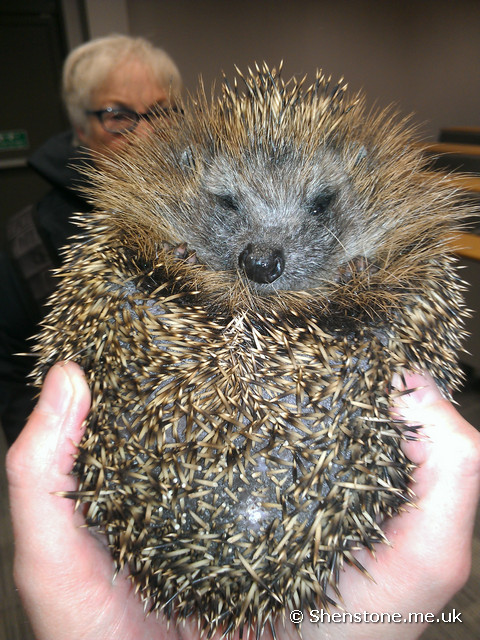A few snippets
from some recent rambles.
Beetles on a Gower beach
First Whiteford
on Gower, which Cardiff Naturalists' last visited to look at beetles a few years
back with Steve Bolchover. A fine day in mid-June this year and the same
stretch of sand on the edge of the dunes around SS 4428/9517 was productively
revealing. The key appears to be to find a larger plank of wood or branch or
tree trunk that is just above the recent high-tide mark but below the dunes.
Lift slowly and see what lies beneath. The black beetle, Broscus cephalotes, was found quite easily. They either stayed put
or went scuttling off across the beach.
Broscus cephalotes
Not so common but also in evidence was Nebria complanata, sufficiently rare to
warrant its own Species Action Plan. It feeds on sandhoppers at night and is
variously referred to as the Strandline Beetle (as is Broscus cephalotes!) or
Beachcomber Beetle. Have your camera ready if you find one under timber as they
often burrow down into the sand.
Nebria complanata
Running around
on the surface of the beach in the same area was the Dune Tiger Beetle, Cicindella hybrida, and helping to
procreate the species were the two below. They can travel at speed so are not
always easy to photograph but these two had other things on their minds.
Dune Tiger Beetle (Cicindella hybrid)
Galls on Gower and at Culverhouse Cross
Whilst on Gower
another gall to add to the existing 'collection'. This I take to be Aulacidea hieracii described as having
ovoid or elongate swelling of the stem, green at first then hard and brown.
This was on several Hawkweed plants in the car park at Oxwich Bay.
Gall on Hawkweed
The Copthorne
Hotel at Culverhouse Cross roundabout, Cardiff, has the usual common shrubs and
trees but the Hawthorn was showing examples of the gall shown below. It has
been a struggle to identify this one and any expert views would be most
welcome. Photographic comparison with web images suggests Gymnosporangium as a possibility - caused by a fungus. Whereas clavariiforme is usually associated with
Juniper which does not seem to apply here, this could be confusum.
Gall on Hawthorn
... and not far
away some Holm Oaks, Quercus ilex, with
the gall shown below. Again, information on galls affecting this oak is
limited, the main reference being to Aceria
ilicis. caused by a mite.
Gall on Holm Oak
The next
challenge is the gall causing these swellings on the leaves of Hop Trefoil, Trifolium campestre, on which I have
again drawn a blank. There is little enough on possible galls for this plant,
one candidate being the mite Dasineura
trifolii but the description of this refers to folding of the leaves along
the mid-rib which is not that evident here. Again, any insights from readers
would be helpful.
Gall on Hop Trefoil
Orchids and Pearly Everlasting
A walk near
Treorchy in late June was something of a revelation. A forestry track which
starts just north of Cwmparc SS 9472 9617 by a metal barrier is worth trying
because of the profusion of Southern Marsh orchids. Up to this point we had
been walking through heavily sheep-grazed turf and the only plant you tend to
find is Tormentil, Potentilla erecta,
although it was interesting to note that Lady's Mantle, Alchemilla sp., was growing in clumps suggesting it is unpalatable
even to the voracious sheep. Once into the sheep-free area the botany was a
revelation. One of the usual suspects was Pearly Everlasting. The following
extract is from a field trip in 1994 to Kenfig by The Wildflower Society:
'Then we came to a
first record for Britain, Anaphalis
margaritacea, Pearly Everlasting, which was recorded in the South
Wales valleys in the seventeenth century and is now spreading over Wales.'
It is certainly
quite common in the Valleys, is visible on the edge of the M4 around the Pyle
turn-off and turned up on Coppet Hill near Goodrich growing under bracken.
Despite its local ubiquity it is almost completely ignored by wildflower books.
Wouldn't it be nice to know more about this plant?
Pearly Everlasting
A smattering of
Common Spotted Orchids, Dactylorhiza
fuchsii, was eclipsed by the Southern Marsh Orchids Dactylorhiza praetermissa which appeared to favour the damper
runnels alongside the forestry track and stretched for a mile or more giving
one of the best displays you are likely to come across in this part of the
world.
Southern March Orchid
Bruce McDonald
Photos by Bruce McDonald









































